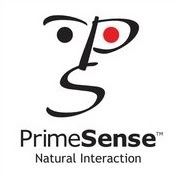Industry Fabless Semiconductor Founded 2005 | Defunct 2013 | |
 | ||
Fate Bought out by Apple Inc. Key people Aviad Maizels (President and Founder)Alexander Shpunt (Chief Technology Officer & Co-Founder)Inon Beracha (CEO) Products PrimeSense 3D SensorCarmine 1.08Carmine 1.09 (Short range)Capri 1.25 (Not Yet Available)Carmine 1080 SoCCapri 1200 SoC (Not Yet Available)NiTE Middleware | ||
World of 3d sensing primesense
PrimeSense is a former Israeli 3D sensing company based in Tel Aviv. PrimeSense had offices in Israel, North America, Japan, Singapore, Korea, China and Taiwan. PrimeSense was bought by Apple Inc. for $360 million on November 24, 2013.
Contents
- World of 3d sensing primesense
- Primesense demos capri 3d sensor on nexus 10 engadget at google i o 2013
- Company Profile
- Light Coding Technology
- PrimeSense System on a Chip SoC
- PrimeSense sensors
- PrimeSense middleware
- Markets
- Television
- PC and Mobile
- Interactive displays
- Retail
- Robotics
- Healthcare
- Milestones
- Partners
- Involvement with OpenNI
- Involvement with Microsoft
- Awards
- References
Primesense demos capri 3d sensor on nexus 10 engadget at google i o 2013
Company Profile
PrimeSense was a fabless semiconductor company and provided products in the area of sensory inputs for consumer and commercial markets.
PrimeSense's technology had been originally applied to gaming but was later applied in other fields. PrimeSense was best known for licensing the hardware design and chip used in Microsoft's Kinect motion-sensing system for the Xbox 360 in 2010.
On November 24, 2013, Apple Inc. confirmed the purchase of PrimeSense for $360 million.
Light Coding Technology
PrimeSense’s depth acquisition was enabled by "light coding" technology. The process coded the scene with near-IR light, light that returns distorted depending upon where things are. The solution then used a standard off-the-shelf CMOS image sensor to read the coded light back from the scene using various algorithms to triangulate and extract the 3D data. The product analysed scenery in 3 dimensions with software, so that devices could interact with users.
PrimeSense System on a Chip (SoC)
The CMOS image sensor worked with the visible video sensor to enable the depth map provided by PrimeSense SoC’s Carmine (PS1080) and Capri (PS1200) to be merged with the color image. The SoCs performed a registration process so the color image (RGB) and depth (D) information was aligned properly. The light coding infrared patterns were deciphered in order to produce a VGA size depth image of a scene. It delivered visible video, depth, and audio information in a synchronized fashion via the USB 2.0 interface. The SoC had minimal CPU requirements as all depth acquisition algorithms ran on the SoC itself.
PrimeSense sensors
PrimeSense embedded its technology in its own sensors, the Carmine 1.08 and Carmine 1.09. Capri 1.25, touted by the company as the world's smallest 3D sensor, debuted at International CES 2013.
PrimeSense middleware
PrimeSense developed the NiTE Middleware, the software that analyzed the data from the hardware, and the modules for OpenNI providing gesture and skeleton tracking. They were released only as binaries. According to the NiTE Linkedin page: “Including computer vision algorithims, NiTE identifies users and tracks their movements, and provides the framework API for implementing Natural-Interaction UI controls based on gestures.” The system could then interpret specific gestures, making completely hands-free control of electronic devices a reality. Including:
Markets
PrimeSense's original focus was on the gaming and living room markets, but expanded to include:
Television
PC and Mobile
Interactive displays
Retail
Robotics
Healthcare
Milestones
Partners
Involvement with OpenNI
PrimeSense was a founding member of OpenNI, an industry-led, non-profit organization formed to certify and promote the compatibility and interoperability of Natural Interaction (NI) devices, applications and middleware. The original OpenNI project was shut down by Apple when they bought the open source software, but Occipital kept a forked version of OpenNI 2 active as an open source software for the SDK for their Structure Product.
Involvement with Microsoft
The company provided the 3D sensing technology for the first Kinect, previously known as Project Natal.
Awards
The company was selected by MIT Technology Review magazine as one of world's 50 most innovative companies for 2011.
PrimeSense won Design Team of the Year in EE Times 2011 Annual Creativity in Electronics (ACE)
PrimeSense was honored as a World Economic Forum Technology Pioneer in 2013.
